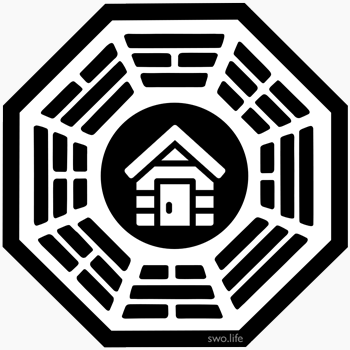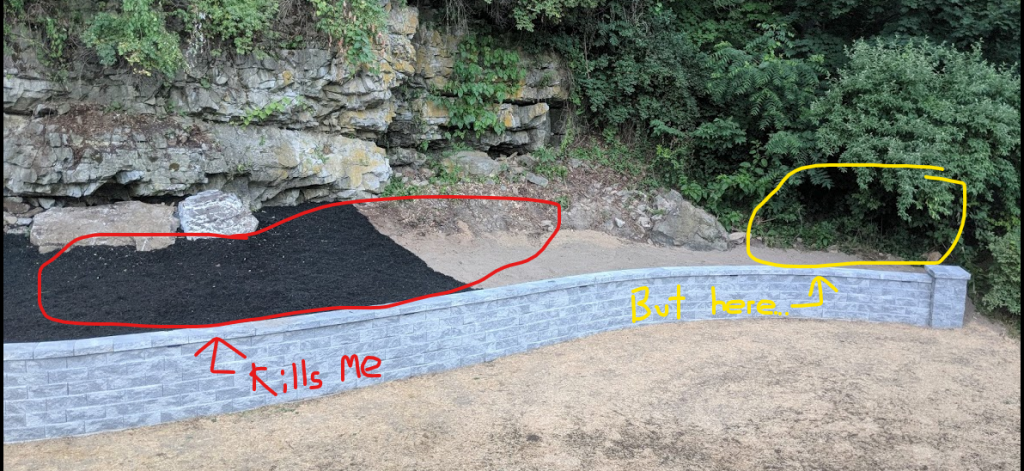YAHIP is a catchy term, isn’t it? Sounds like a great .com site, with like memes or something else catchy on it. But it actually stands for something much, much worse: Yet Another Home Improvement Project.
So now that I’m with child – that sounds wrong, I’m not pregnant, although that would make me pretty rich…
But anyway, now that I have a child, I’ve come to realize that despite my best efforts, he will always have more things than I can store in my home. And when it comes to outside things, I said to Jen that we need to find places to store outside things before we get them. And I very much lost that battle. The stuff came and I couldn’t do a thing about it!
So I started working on a new project at home, “The Shed.”
Sounds like a Dharma Station… The Shed…

I just made that in Photoshop. That’s actually pretty awesome and I’m going to have to get that printed and put on the shed.
ANYWAY!
So last summer we got a retaining wall put up in our backyard. The reason – the backyard was so overgrown and could not be maintained in it’s current condition. We wanted to make it look nice, but couldn’t keep the weeds out. Plus, by putting in the retaining wall, we got some more yard out of it, and I convinced Jen to add a patio and firepit.
I had one small complaint – I wanted to get more yard out of it then we did. However, with that being said, the people we had come and do it did just an amazing job, and I think if they tried to give us more yard it would have actually looked worse, cost us a ton more, and we would have needed special permits to go with a retaining wall above 4 feet. So… good job them.
To expand a little though on my desire to maximize my yard space, here’s the deal – about 2000 square feet of my property is unusable. It sits on top of a giant rock wall. We’re talking two story tall, carved out by glacier during the last ice age, rock. In front of that was dirt that sloped down to my yard, which, despite our best efforts after buying the house, would become overgrown shortly after the start of every spring. So the retaining wall cut back on the slope a decent amount, again giving us some more yard, and we used some of the space as well for an elevated patio and firepit. Again, it looks awesome.
Okay, so now you have the backstory of The Wall… Sorry, no Dharma logo for that.
Now, since I am crazy, I want to utilize every inch I possibly can.

The spot on the left (circled in red) I really can’t do anything about. not only is it sloped, but there’s no real access to the spot because of a big rock to the right of the red circle.
The spot on the right (circled in yellow), however, now that I can probably work with. It has a small incline up from my yard, but nothing too steep. Maybe I can do something there. So I got out my reciprocating saw, and started to cut everything around there that was growing. Then got out my shovel and pick ax and started to dig. I’m now left with a relatively level section of property back there.
My plan is to next slope the back a bit, so it’s not just a steep four foot drop off, then pour stone on top, and then have a shed built there.
The project has definitely had some challenges, like giant rocks that needed to be excavated:
And the amount of smaller stone stone that was pulled out was incredible and used to continue to build up the wall I created around the town property. But overall, the “dig” has been pretty straightforward.
I do have that rock that was pulled out from above sitting in my yard, and will need to do something about that soon.
Overall though I’m pretty happy with the progress.
And because I’m obligated to show off my son, Connor has actually been loving every minute of this project and wants to help at every stage.
